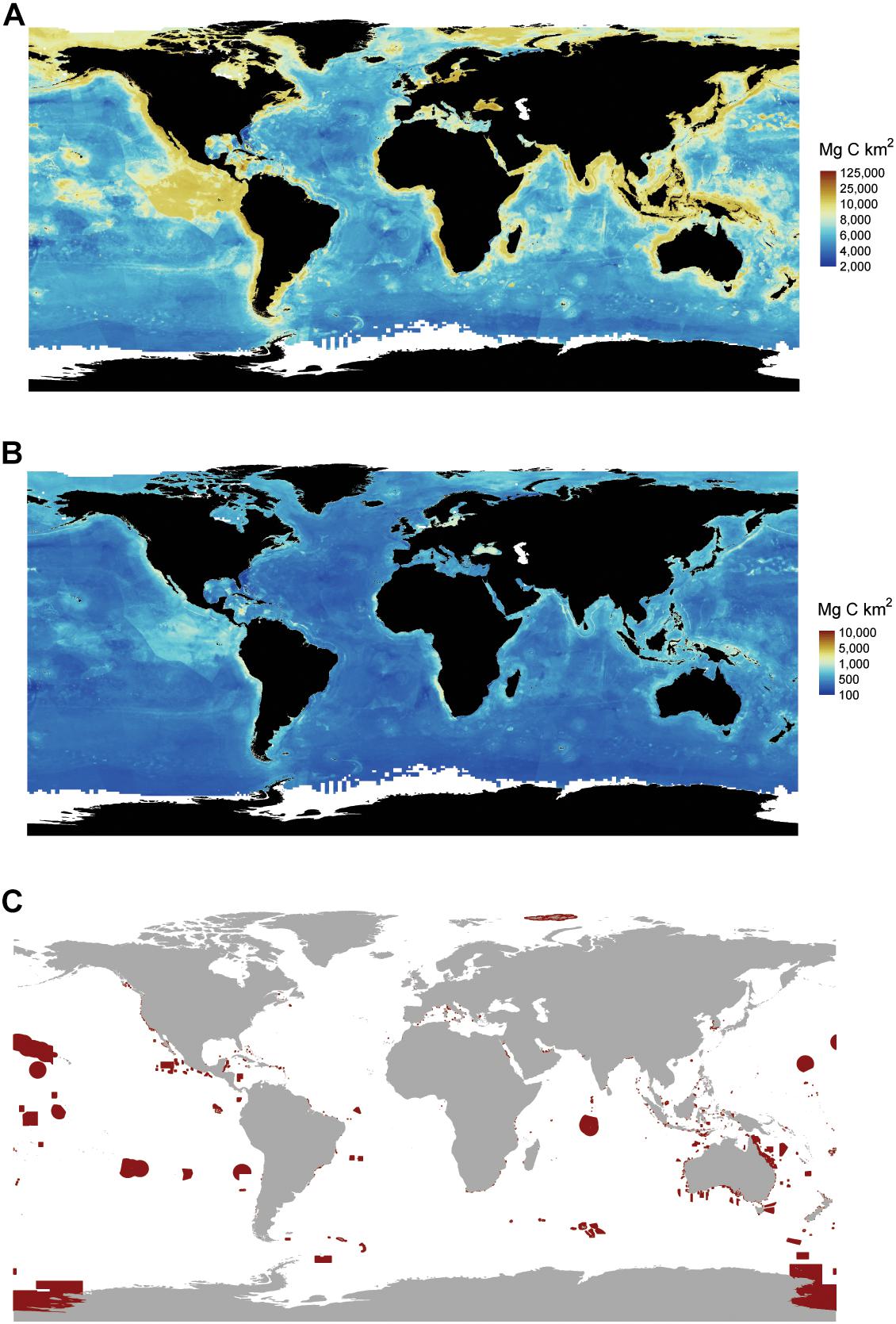A previous post in this blog explored sediments as sinks for contaminants that get reintroduced into the ecosystem after trawling events [1]. In this case, however, we go further into depth on how marine sediments in particular are prominent carbon sinks, creating a semi-permanent store of carbon preserved from as far as millions of years ago.
Sediments as Carbon Sinks
A study by Atwood et al. in 2020 attempted to map and consolidate the amount of carbon stocks available in marine sediments based on data from various published sources [2]. Their numerical model quantified carbon stocks in marine sediments at 1 m depth globally to be at 2322 Pg, with greater amounts found in deep-sea basins compared to shallower waters near the continental shelf as illustrated in Figure 1A below [2].

Bottom-Trawling Remobilisation of Carbon
While the article does not focus on bottom trawling specifically, it mentions bottom-trawling as a potential anthropogenic activity that could remobilise the stored carbon. This phenomenon was instead investigated by a more recent study in Sala et al (2021). Using the modeled data above and a satellite-inference of bottom-trawling range, they were able to estimate that 1.47 Pg of the stored carbon would be metabolized into aqueous CO2 emissions within a year after a trawling event [3]. The subsequent 9 years of trawling would have seen reduced emissions at around 0.58Pg of CO2 [3].
Such values were found to be comparable to emissions from the global aviation industry, making it a significant contributor to global carbon emissions [4,5]. These quantities of aqueous CO2 emissions can threaten the ocean’s normal functioning of its carbon cycle and potentially release more CO2 into the atmosphere [3]. This can greatly aggravate the extent of climate change and its impact on the environment [5].
Marine Protected Areas to Reduce Emissions

It is also important to note that as trawling technology improves to go further and deeper, there is greater possibility of remobilising carbon stored in deeper basin areas and the estimated values above would see definite increases. To mitigate this, Sala et al. proposed potential locations for MPAs that could effectively curtail the remobilisation of carbon [3]. The allocation of these MPAs were made easy due to geographic concentration of trawling activities. As such, they concluded that:
“At our working resolution of 50 km × 50 km, eliminating 90% of the present risk of carbon disturbance due to bottom trawling would require protecting 3.6% of the ocean (mostly within EEZs)”[3]
The implementation of MPAs in areas of top priority would hence ensure maximum carbon benefits with only a small fraction of the ocean protected as seen in Figure 2f above.
References:
[1] Bradshaw C, Tjensvoll I, Sköld M, Allan IJ, Molvaer J, Magnusson J, et al. Bottom trawling resuspends sediment and releases bioavailable contaminants in a polluted fjord. Environmental Pollution. 2012;170:232–41.
[2] Atwood TB, Witt A, Mayorga J, Hammill E, Sala E. Global Patterns in Marine Sediment Carbon Stocks. Frontiers in Marine Science. 2020 Mar 25;7.
[3] Sala E, Mayorga J, Bradley D, Cabral RB, Atwood TB, Auber A, et al. Protecting the Global Ocean for biodiversity, Food and Climate. Nature. 2021 Mar 17;592:397–402.
[4] Rocliffe S, and Leeney RH, Research briefing: Bottom trawling and the climate crisis. Blue Ventures, London, United Kingdom. 2021.
[5] Einhorn C. Trawling for Fish May Unleash as Much Carbon as Air Travel, Study Says. The New York Times [Internet]. 2021 Mar 17; Available from: https://www.nytimes.com/2021/03/17/climate/climate-change-oceans.html
No Comments